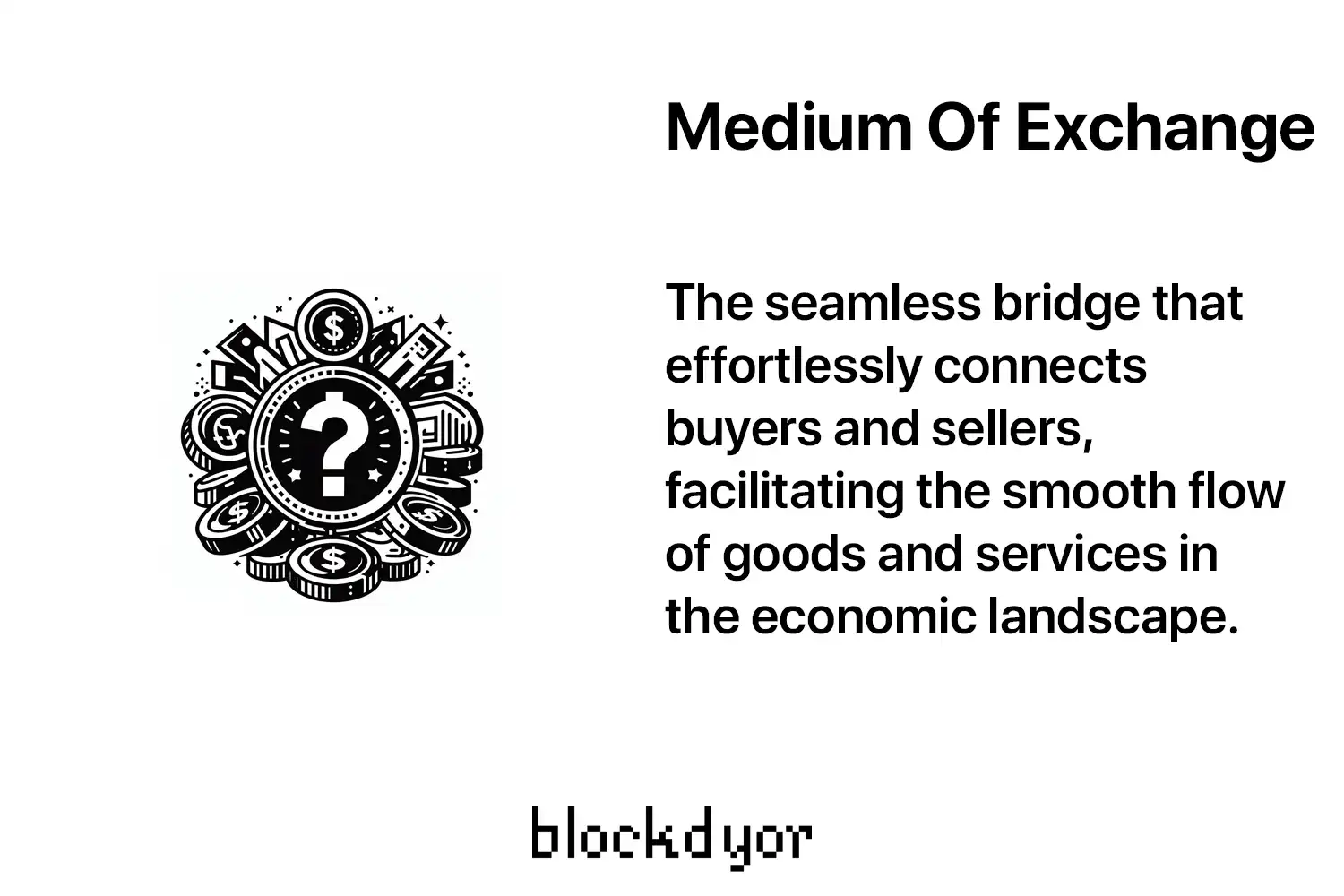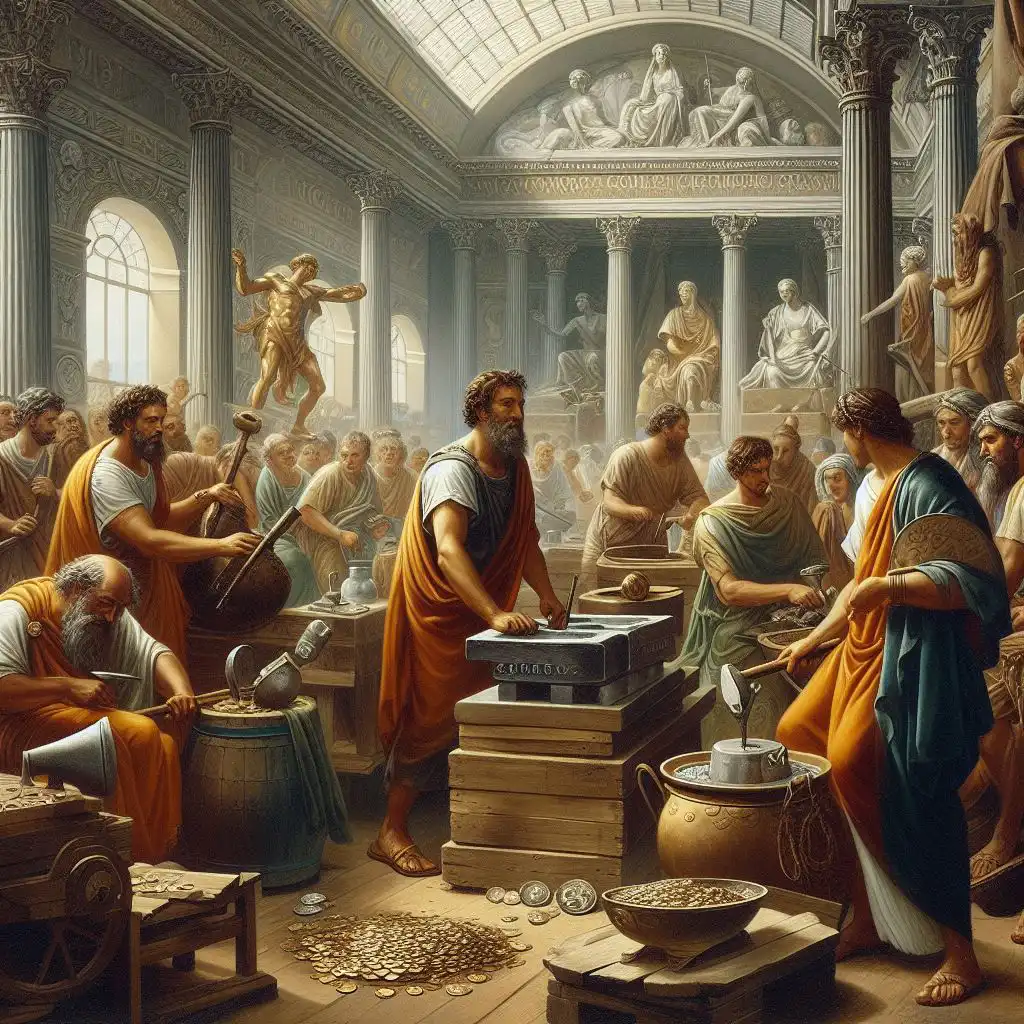Medium Of Exchange: What It Is And How It Works
Explore the significance of a Medium of Exchange—a financial bridge simplifying transactions. From basics to Bitcoin, grasp its role in trade and value comparison.
In the intricate web of economic transactions, the concept of a "medium of exchange" plays an important role, acting as the backbone that facilitates seamless trade between individuals, companies, and systems.
This guide explores the historical roots, essential properties, and contemporary relevance of the medium of exchange, with a keen on its application in the digital age and the emerging role of Bitcoin in this landscape.
History of Medium of Exchange

The need for an efficient method of exchanging goods and services arose around 2,600 years ago when societies outgrew the limitations of barter systems.

Barter, effective within small tribes or families, became impractical for larger communities. The ancient region of Lydia, now modern-day Turkey, pioneered a solution by introducing stamped coins as a medium of exchange, certifying weight, purity, and value.
Understanding the Medium of Exchange
A medium of exchange serves as an intermediary instrument widely accepted to facilitate the buying and selling of goods and services.
Shells, whale teeth, and other rare objects once played this role, but modern currencies have become the most common medium of exchange. Currencies, however, must possess specific properties to effectively fulfill their role.
Properties of a Good Medium of Exchange

The Lydians pioneered the creation of the inaugural medium of exchange coin, laying the groundwork for comprehending the indispensable qualities of an effective medium.
In order for an item or system to qualify as a suitable medium of exchange, it must embody specific properties that enhance efficiency and functionality. These encompass widespread acceptability, portability, value preservation, and censorship resistance.
In the contemporary digital era, Bitcoin has risen as a promising contender, serving as a digital currency that aligns with these essential properties. Its emergence signifies a transformative force, offering a potential solution to the evolving needs of a medium of exchange in the modern age.
The Need of a Medium of Exchange
The concept of a medium of exchange addresses the barter problem, often termed the "coincidence of wants." This mental burden of finding an exact scenario for trade impedes economic growth.
A medium of exchange alleviates this burden by allowing indirect trading of goods, making transactions more accessible and fostering a growing economy.
Money as the Ultimate Medium of Exchange
In the spectrum of mediums of exchange, money stands out as the most efficient, eliminating the challenges associated with barter. Its role extends beyond facilitating transactions to creating an equal playing field for buyers and sellers. Money empowers producers to identify market needs and enables buyers to plan purchases based on stable pricing models.
Bitcoin as a Medium of Exchange

In the evolving landscape of global finance, Bitcoin has without any doubt positioned itself as a medium of exchange, challenging skeptics and finding utility across diverse scenarios. Its acceptance spans from local businesses to online stores, with millions worldwide actively engaging in Bitcoin transactions. Beyond traditional commerce, it serves as a tool for protesters, an income conduit for women in restricted banking environments, and a facilitator of substantial remittances.
The integration of Bitcoin into the Lightning Network through the Nostr communications protocol showcases its transformative potential. This innovation allows instantaneous global transfers of satoshis, paralleling the simplicity of a social media "Like" button. Despite its evident role as a medium of exchange, perspectives on Bitcoin's daily usage vary globally, with first-world countries not yet fully embracing it for day-to-day transactions.
Understanding Bitcoin's trajectory involves recognizing the stages a new form of money typically undergoes. It begins as a collectible, attracting interest due to unique properties, and evolves into a store of value as demand grows. Bitcoin currently finds itself in this stage, marked by heightened volatility. The subsequent phases involve becoming a medium of exchange, where stability in purchasing power makes spending more attractive, and finally, a unit of account, integrating into global financial systems.
The current challenge lies in the reluctance of individuals to spend Bitcoin due to its ongoing value appreciation and associated volatility. Gresham's Law elucidates this behavior, highlighting the inclination to spend less valuable currency. Overcoming this hurdle involves achieving price stabilization, a natural outcome once Bitcoin reaches saturation, and waves of new users slow down. At this point, spending Bitcoin becomes more attractive as stability replaces the fear of missing out on potential value growth.
Looking forward, the next decade holds promise for Bitcoin's complete transition from a store of value to a widely accepted medium of exchange. As the market matures, whale transactions become inconsequential, ensuring ample liquidity and a stable price level comparable to major fiat currencies. Confidence in spending satoshis will rise, marking a transformative shift in Bitcoin's role within the global financial ecosystem. The ongoing process of education and understanding will play a crucial role in facilitating this evolution, much like the gradual adoption of the internet and email in the past.
Conclusion
As societies evolve, so do their monetary systems. The medium of exchange remains a fundamental component, adapting to the changing landscape of trade.
Whether in ancient Lydia or the digital realm of Bitcoin, the underlying properties of wide acceptability, portability, value preservation, and censorship resistance remain constant. The future evolution of trade hinges on finding the most suitable medium of exchange that satisfies these timeless properties.
While Bitcoin holds promise as a medium of exchange, it is still in its infancy stage. Challenges such as widespread adoption, regulatory frameworks, and addressing scalability issues need resolution for Bitcoin to realize its full potential.
However, its disruptive nature and the evolving needs of society suggest that with time, Bitcoin may become a dominant medium of exchange.

